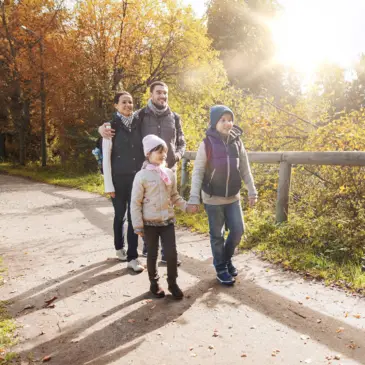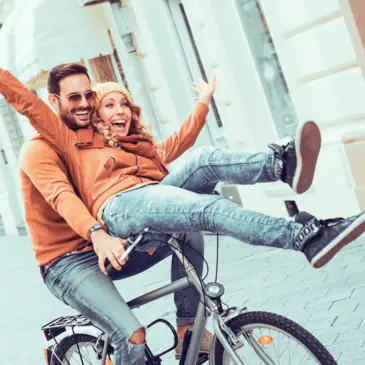City break Vienna — music, art and coffee house culture | H-Hotels.com
A city break in Vienna will entice you to one of Europe’s most varied cities. You can follow in the footprints of the famous Austrian empress, Kaiserin Sisi, or take a ride on Vienna’s giant Ferris wheel, the Riesenrad at the Prater. Another option is to find out more about the traditions of the Hofreitschule (Spanish riding school).
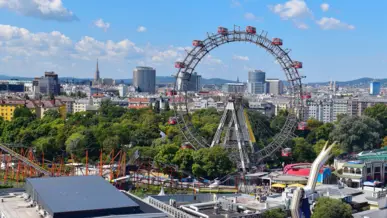
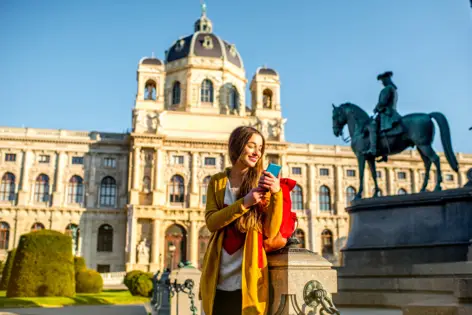
It is worth making a trip to Vienna at any time of year. In spring you can enjoy the first warm rays of sunshine in one of Vienna’s lovely wine taverns, known as Heurigen. Or explore the zoo at Tiergarten Schönbrunn, which is also waking from its winter hibernation. The summer months are perfect for sightseeing and relaxing in one of the city’s many parks. In autumn, make sure you do not miss out on the first Federweißer of the year, a cloudy, partially fermented wine. At Christmas time there are wonderful markets all over the city that are definitely worth visiting.
Vienna also has plenty to offer from a culinary perspective: try the delicious Viennese speciality coffees at one of the numerous coffee houses. Wiener Schnitzel and Sachertorte also make excellent choices for your city break. Austrian cuisine has a few other gourmet treats too.
Our city break guide to Vienna describes some interesting Viennese tourist attractions in more detail. We will show you the best viewpoints and recommend some museums that are well worth a visit.
Discover Vienna – book hotels in Vienna now at unbeatable prices!
Find top hotels in Vienna – at guaranteed best prices!
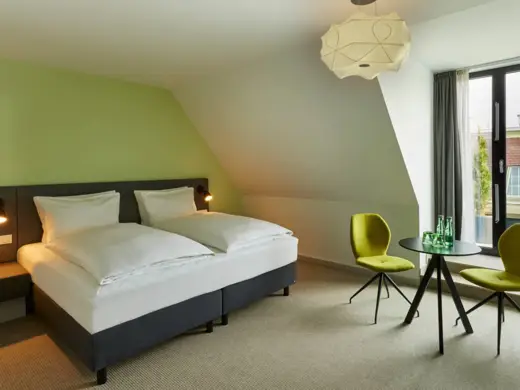
H+ Hotel Wien is located two kilometres northwest of the city centre with great transport connections. 75 rooms with modern furnishings await you, offering everything you need to relax after a long stroll through the city or a business meeting. After a delicious breakfast from the buffet, you can start you day feeling invigorated. You can reach the famous sights in the city centre on foot or by tram.
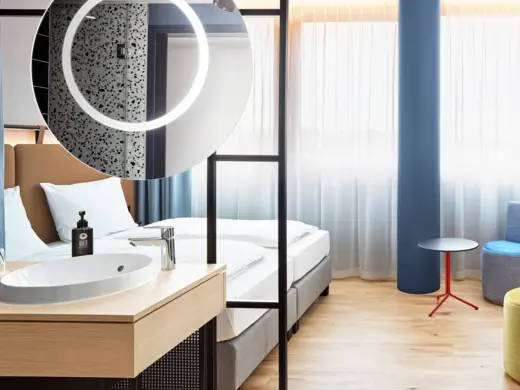
Welcome to H2 Hotel Wien Schönbrunn, the perfect base for exploring Vienna! Our budget-friendly double and four-bed rooms are a stone's throw away from Schönbrunn Palace. Plus, the underground is right on our doorstep. Experience comfort at its best! All rooms have air conditioning, satellite TV and a bathroom with a vitality shower. In addition, the hub offers dining and beverages.
City break Vienna: what are the must-see attractions?
Vienna offers a huge number of tourist attractions. During a trip to Vienna there are famous churches, opera houses and museums to explore. Your stay in the Austrian capital will be accompanied by classical music and complemented by the renowned Viennese coffee house culture. At this point, we would like to suggest the sightseeing highlights you should include in a trip lasting between two and four days.
St. Stephen's Cathedral
St. Stephen's Cathedral in Vienna is one of the city’s finest landmarks. Construction work began in the 12th century. The cathedral is over 100 metres long and 34 metres wide. Inside are highly ornate altars. The imposing atmosphere and extensive cathedral treasure have made St. Stephen's Cathedral one of Vienna’s top tourist destinations. The cathedral treasure includes precious relics, books and a variety of vestments. More information about the cathedral’s long history can be acquired by going on one of the guided tours.

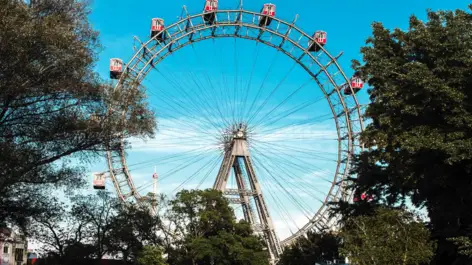
Wiener Prater
No trip to Vienna would be complete without a visit to the Prater. This is where you will find the famous big wheel, which dominates the city skyline. This amusement park covers an area of about six square kilometres and is located in Vienna’s second district, Leopold. Nostalgia is a big feature at the Prater. Lots of the funfair rides retain their historic appearance.
The Prater Museum also has information about the period when the amusement park was founded in the late 19th century. Over the huge area covered by the Prater, it combines lots of modern attractions, offering a massive adrenaline kick, with much calmer areas where you can enjoy the natural world.
Hundertwasserhaus
Friedensreich Hundertwasser had close associations with his native city of Vienna throughout his life. Between 1983 and 1985 a residential complex was built in Vienna’s 3rd district, which features typical Hundertwasser architectural elements. The façade of the building continues to be a popular subject for photographs today.
Wiener Rathaus (Vienna City Hall)
This magnificent building is located in a central position on Rathausplatz and was built in the 1880s. It is one of the most important buildings in Vienna that is not a place of worship. The ceremonial hall inside measures 71 metres in length, with a width of 20 metres and a height of 18.5 metres. The city hall also houses Vienna’s city library, the Stadt- und Landesbibliothek.
Get to know the building in more detail by taking a guided tour during your trip. These take place at 1 pm on Mondays, Wednesdays and Fridays. In winter, a wonderful atmosphere can be enjoyed at the Adventsmarkt in front of the city hall.
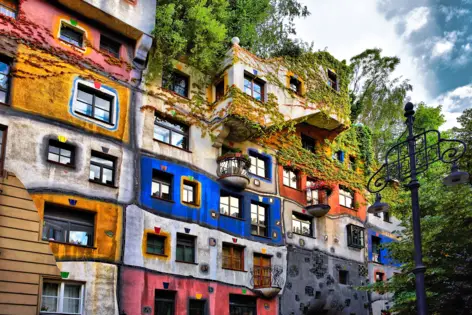

Tiergarten Schönbrunn
The zoo was opened back in 1752, which makes it one of the oldest in the whole world. Over time, the facilities have been repeatedly adapted to meet the latest zoo standards. The park covers over 17 hectares, which are home to 700 different species of animals. Some of these are under threat of extinction. The zoo focuses on natural enclosures and has animal welfare standards appropriate for each species. If you are spending several days in Vienna, a day at the Tiergarten Schönbrunn offers a welcome change.
Haus des Meeres
Vienna might not be at the seaside, but the Aqua Terra Zoo “Haus des Meeres” brings the ocean right into the heart of this huge city. This aquarium complex is home to over 10,000 animals in an area of roughly 5,000 square metres. Sea creatures such as crabs, fish, sharks and rays are not the only animals represented. Haus des Meeres is also home to some exotic animals such as apes, flying foxes and lizards.
Wiener Staatsoper
The Opera House in Vienna’s 1st district is one of the most important concert venues in the world. The opera opened in 1869. Every year around 350 performances take place there. Even if your trip to Vienna doesn’t include attending a performance at the Wiener Staatsoper, it is well worth making a detour there. The magnificent concert hall can be visited on one of the guided tours around the building.
Visitors will be shown the foyer, various elegant rooms and the auditorium as well as being given a glimpse behind the scenes. The tour lasts about 40 minutes.
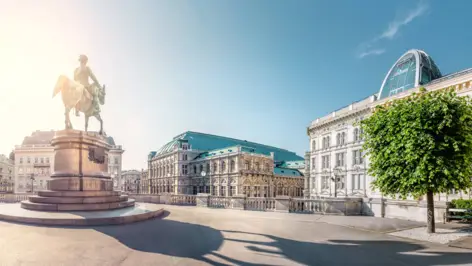
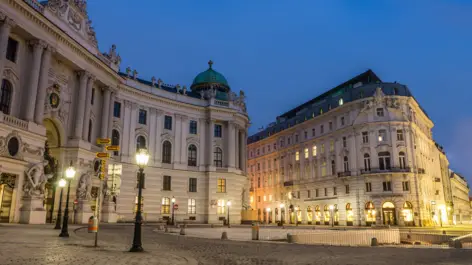
Spanish Riding School
The Spanish Riding School in Vienna is the oldest of its kind in the world. It was founded over 450 years ago and is on the UNESCO intangible cultural heritage list. Initially the riding school was for training members of the imperial family. Today the riding school continues to be one of the most important institutions in classical equestrianism.
The special thing about it is that training is done exclusively using Lipizzan horses. You can visit the riding school during a trip to Vienna. Public training sessions take place Tuesday to Saturday between 10 am and midday.
Important: dogs are not permitted on the riding school premises. Children must be at least three years old.
Vienna's palaces and castles
Vienna was the centre of the Habsburg Empire for several centuries. Traces of this history are still evident in Vienna today. Palaces that reflect the luxury of a bygone era can still be seen in the city and surrounding area. A lot can be learned about Austria’s probably best-known imperial couple. During your trip to Vienna, explore the places where Kaiser Franz Joseph II and Kaiserin Sisi spent their lives.
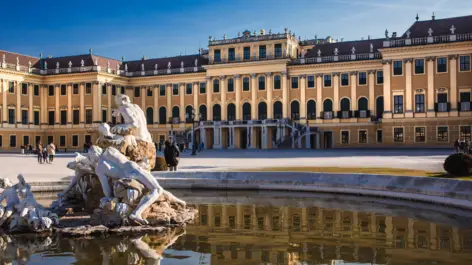

The magnificent Schloss Belvedere was built in the first half of the 18th century and functioned initially as the summer residence for Prince Eugen. There are two building complexes, consisting of the upper and lower Belvedere. Nowadays, a museum is housed in the palace, containing one of Austria’s most important art collections.
At the Upper Belvedere you can enjoy the world’s largest collection of works by Gustav Klimt. These include the painting “The Kiss”, which the famous artist produced in 1908/09. The permanent display showcases a collection of works from the Middle Ages up to the present day. The special presentation style gives you an unusual view of all sorts of artworks.
Our tip: plan a bit more time for your visit to Schloss Belvedere during your city break. The Schlossgarten (palace gardens) are among the finest in the world and offer a deep insight into the sumptuous Baroque period.
The Baroque Gartenpalais Liechtenstein is home to one of the largest private collections in the world. The beautiful and very extensive park is a particular highlight. Every year, weddings and many other events are held in the palace’s magnificent rooms (for example the Herkulesaal).
Schloss Schönbrunn is a gorgeous palace that was once the summer residence of the Habsburg family. Construction here began in the mid-17th century and was not completed until 1780. The palace has over 1,400 rooms. Among the most impressive are undoubtedly the billiard room, Great Gallery and mirror room. From the Gloriette in the palace garden, you have fantastic views over the gardens and building.
Schloss Schönbrunn is one of the city’s main attractionst, which means it often experiences a steady stream of visitors. To make sure you don’t waste too much of your trip queueing at the ticket office, you should book your tickets in advance online. One very popular choice is the Imperial Tour, which takes you through the reception and private rooms of the former rulers.
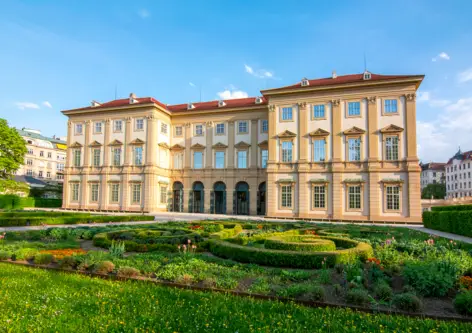
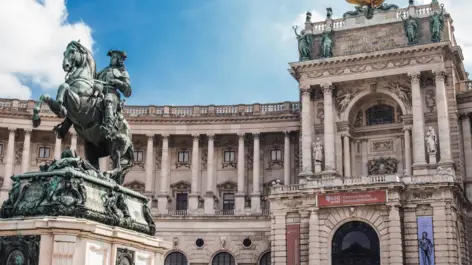
A visit to Wiener Hofburg is almost a mandatory component of a trip to this city on the Danube. This residence was the centre of power for the Habsburgs. Since 1946 it has been used as the official seat of the Federal President of Austria. The entire building complex covers an area of over 24 hectares. A visit to the Hofburg will include the Imperial Apartments, in which Kaiser Franz Josef and his wife Elisabeth lived. A tour offers a thrilling glimpse of that era and the everyday life of the imperial couple.
Where do you get the best views of Vienna?
There are various lookout points in Vienna from where you can enjoy a special view of the city. Some viewing platforms can only be reached on foot, while others have convenient elevator access.
The north and south towers of the Stephansdom offer fantastic views over Vienna. In the south tower (known as “Steffl”) there are exactly 343 steps up to the viewpoint. Up at this height you will find a unique panoramic view. The slightly smaller north tower has lift access. Here you will find the largest church bell in Austria, which is affectionately known as the “Pummerin”.
The Danube Tower is 252 metres high and was completed for the 1964 International Horticultural Show. The lift takes just 35 seconds to convey visitors up to the observation deck at a height of 155 metres. The 360-degree panoramic view of Vienna is the highlight of any trip to the city.
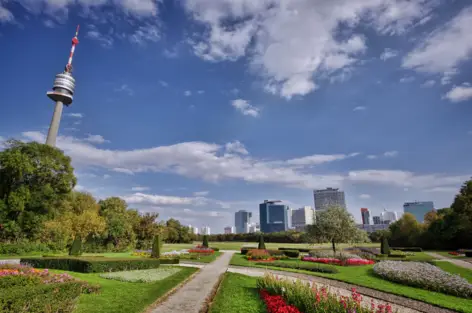
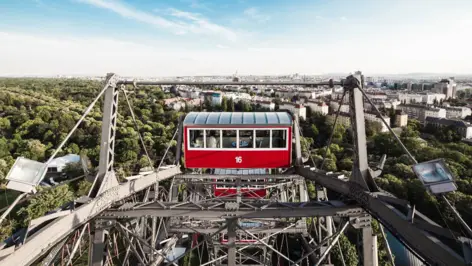
The roof at Haus des Meeres offers another interesting viewpoint. This is at a height of around 50 metres and provides a varied 360-degree view of the Austrian capital.
Built in 1897, the Giant Ferris Wheel on the Prater is one of Vienna’s main attractions. Make sure you plan a visit here during your trip to Vienna. The wheel has a height of exactly 64.75 metres. There is space for 15 people in each of the 15 gondolas. The giant wheel turns at about 2.7 km/h, which means an entire loop takes roughly four minutes. From the top, your fully enclosed gondola offers fabulous views over the city of Vienna.
Experience coffee house culture in Vienna
Viennese coffee house culture goes back to the late 19th century. It is on the UNESCO intangible cultural heritage list. There are coffee houses all over the city, offering you a trip into a world that is steeped in tradition. Viennese coffee houses often exude a dignified atmosphere thanks to their carefully chosen interior furnishings and architecture. Among the most famous coffee houses in Vienna are Café Hawelka, Café Landtmann, Café Central, Café Sperl and Café Diglas.
There are lots of traditional cafés in Vienna, and they have been popular with both locals and visitors since the turn of the century. These often served as a meeting place and creative hotspot for well-known writers and painters. The cafés inspired artists such as Oskar Kokoschka and Robert Musil. The author Stefan Zweig recalled the former age of coffee house culture in his famous work “The World of Yesterday” (“Die Welt von Gestern”).
Discover the wide range of Viennese speciality coffees in Vienna’s coffee houses. What the Austrians refer to as a “kleine Braune” (small brown) is a simple mocha coffee served with milk or whipped cream. A “Melange” is a hot drink consisting of half-and-half milk and coffee. The “Wiener Melange” (Viennese melange) comes with frothy milk. The best thing to have with your coffee is a slice of Sachertorte — this famous chocolate cake is intimately associated with Vienna.
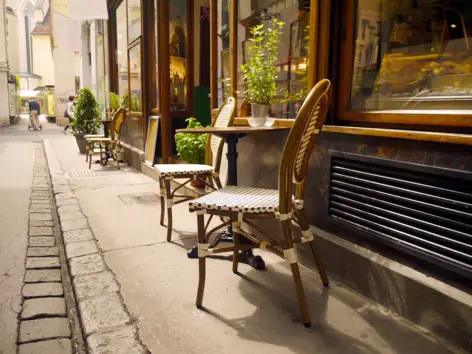
The best museums in Vienna — world-class art and music
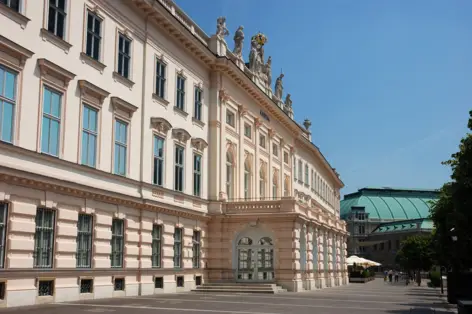
Plan a museum visit as part of your multi-day trip to Vienna. This city on the Danube has a very varied museum landscape. You will find all sorts of world-famous exhibitions and insights into classical music.
The Albertina is the city’s most important art museum. It is open 365 days of the year. The history of the Albertina begins in 1776 with the graphics collection belonging to Duke Albert of Saxony-Teschen. The museum continues to be one of the most visited institutions in the city today. It contains various collections from the world of painting & sculpture, drawing & print, photography and architecture. That is why a visit to the Albertina is a clear recommendation for any city break in Vienna.
One of the highlights of your visit is the Young Hare by Albrecht Dürer from 1502. Since the museum is located in a former Habsburg residence, you will also see all sorts of lavishly restored state rooms.
The Kunsthistorisches Museum Wien (art history museum) receives around 1.75 million visitors per year, making it another of the city’s main attractions. Significant exhibits include the Egyptian and Oriental Collection and the antiques collection. The art gallery displays masterpieces by Vermeer, Rembrandt, Rubens, Pieter Bruegel the Elder and Raphael.
The art history museum extends over several locations. In addition to the Kunsthistorisches Museum Wien, these include the Theseus Temple and the Imperial Carriage Museum (Kaiserliche Wagenburg) at Schloss Schönbrunn.
At Haus der Musik the focus is all about sounds, musical notes and instruments. A visit here allows you to experience the diversity of music and learn about its historical origins. The museum is spread across four storeys. The Sonosphäre on the second floor is a particular highlight. In this exhibition, you can experiment with making sounds yourself.
Our tip: at the “Namadeus” terminal, you can set your name to music following the principles of a composition by Mozart. At the museum shop, you can even get the score printed with Mozart’s original signature. This is a completely individual souvenir and a permanent reminder of your trip to Vienna.

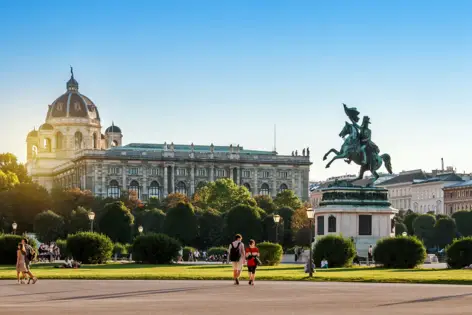
In the museum quarter there are over 60 cultural institutions and museums. The building complex is located in the 7th district, Neubau. Amongst other things, this historic building is home to the Leopold Museum and the Museum of Modern Art. The creation of the premises at Q21 opened up roughly 7,000 square metres of facilities for artists, groups, associations and other people working in the cultural or creative sectors. All sorts of events take place here.
At Vienna’s Natural History Museum, you will find one of the world’s most important natural history collections. A particular highlight is the almost 30,000-year-old Venus of Willendorf. You can also see the world’s largest collection of meteorites at the museum.
The Hofburg is home to the Silberkammer (imperial silver collection) and the Sisi Museum. At the Silberkammer, there are all sorts of exhibits from the store of items held in the “Court Silver and Table Chamber”. This gives you a glimpse into the fine-dining habits of the Habsburg dynasty over many centuries. At the Sisi Museum you will also learn lots of interesting facts about the very sad story of Kaiserin Elisabeth. The collection includes some of her personal items and clothes. A visit is a genuine highlight, and not just for ardent Sisi fans.
Vienna’s meeting places – parks and squares
Vienna has a wide variety of parks and squares where locals meet, and tourists enjoy as a photo opportunity.
Visit some of Vienna’s famous squares during your trip and get to know this fascinating city in more detail.

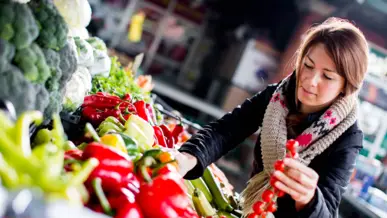
Naschmarkt
The Naschmarkt is in Mariahilf, which is Vienna’s 6th district. This is the city’s largest market square and looks back on a long history, beginning in the late 18th century. Today you will find everything the culinary heart could desire here. Large numbers of traders offer international specialities, spices, cheese, fruit, vegetables and plenty more besides. Alongside the market are a range of cafés where you can take a break.
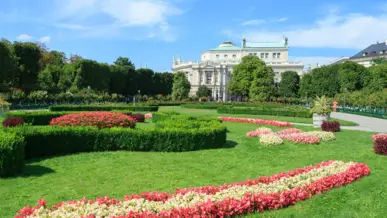
The Vienna Volksgarten
The Vienna Volksgarten translates as the People’s Garden and is a public park area. Before the park was established, this is where the city walls and fortifications were located. During your trip to Vienna, you should definitely take a break and relax here. Regular events are held in the extensive park grounds.
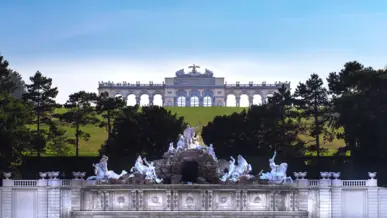
Schlossgarten Schönbrunn
Schlossgarten Schönbrunn is classic example of baroque splendour. The palace and gardens form a unique entity. The park includes the Neptunbrunnen, a fountain that is a popular spot for photographs. The palm house is another big visitor attraction. The same is true for the Sonnenuhrhaus (sundial house) built in 1904.
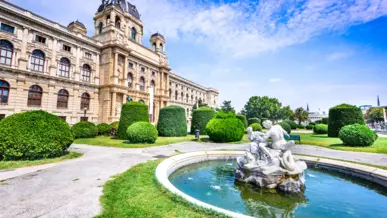
Maria-Theresien-Platz
Opposite the Hofburg visitors will find Maria-Theresien-Platz. This is the site of a giant monument, which is one of the most important for the Habsburg monarchy. The Maria Theresa monument stands over 19 metres tall and pays tribute to the eponymous empress. It is now on UNESCO’s list of world heritage sites. The square is also an ideal place to start an extensive tour of Vienna. For example, the Natural History Museum and Hofburg are just a short walk away.
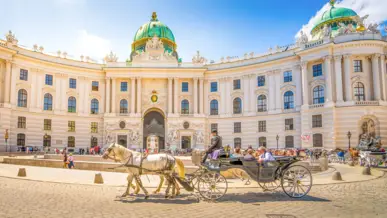
Michaelerplatz
Michaelerplatz is in the centre of Vienna. It was built during the 1820s and today is one of Vienna’s most important squares. From here, you have a wonderful view of the Hofburg and St. Michael’s Church. The square is also incredibly fascinating from an archaeological perspective. In 1991 the remains of a Roman military camp were discovered and uncovered here.

Setagayapark
Setagayapark is in Vienna’s 19th district and represents a little piece of Japan within this Austrian city. The park was created as the result of a culture and friendship agreement between the district of Döbling in Vienna and Setagaya in Tokyo. This Japanese garden is a beautiful place to unwind, which is just what you need during an exciting tour through Vienna.
City break to Vienna: facts about the Austrian capital
The city of Vienna is one of the most popular city-break destinations in Europe. And this is confirmed by the accommodation figures. In 2018 alone, there were over 16.5 million overnight stays. The city covers an area of precisely 414.87 square kilometres and is home to almost 1.9 million people. This popular city is the capital of Austria. Both the parliament and government are based here.
The city is organised into 23 districts (“Gemeindebezirke”) and 89 subdistricts. The inhabitants of Vienna refer to these districts by name or by the specific district number. Vienna has a first-rate and extensive public transport infrastructure. Various timed tickets are available, which are valid for 24, 48 or 72 hours. You can use these travelcards on the U-Bahn, S-Bahn, trams, buses and Nightline buses.
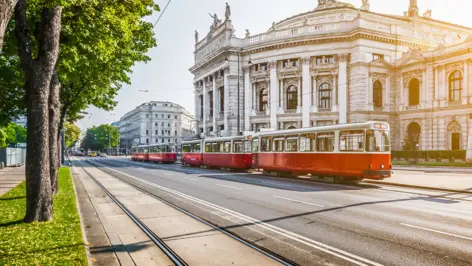
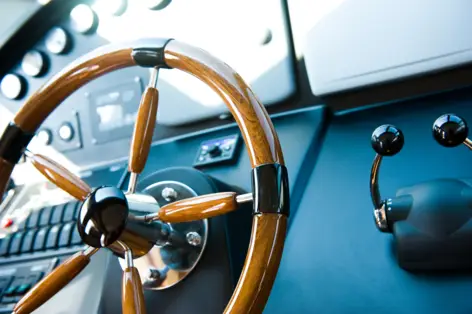
Lots of famous people were born in Vienna. These include Otto Wagner (1841), Friedensreich Hundertwasser (1928), Romy Schneider (1938), Senta Berger (1941), Niki Lauda (1949) and Falco (1957). A trip to Vienna offers lots of opportunities to follow in the footsteps of these people.
All over the city, you will find buildings by the famous urban planner and architect Otto Wagner. The underground stations were designed according to his vision, and two thirds of them are still in operation today. These include the station at Karlsplatz.
The Danube runs through Vienna. Take advantage by booking a cruise on the Danube, starting in Vienna. Vienna is also a very green city. There are lots of parks and green spaces that are perfect for relaxation. For example, you can visit the Kurpark Oberlaa in the 10th district. This includes an animal enclosure and a Japanese Takasaki garden.
Arriving in Vienna
You can start your trip to the Austrian capital by aeroplane, train or car. The city also has lots of interregional bus connections. Vienna International Airport is about 18 kilometres south-east of the city in Schwechat. From here, you can get to the centre in about 25 minutes by S-Bahn. The central Hauptbahnhof is where the long-distance trains arrive.
There are almost 40 direct connections with the ICE, Eurocity and the ÖBB Railjet from Germany. The A21 is the orbital motorway around Vienna. For example, from Munich you can take the A94 and A1 (Austria) via Linz eastbound.
Irrespective of whether you come by train, aeroplane or car, if you are travelling to Austria with your dog, cat or another pet, you will need certain documents. These include the EU pet passport and a valid anti-rabies vaccination. Your pet will also need to be microchipped.


